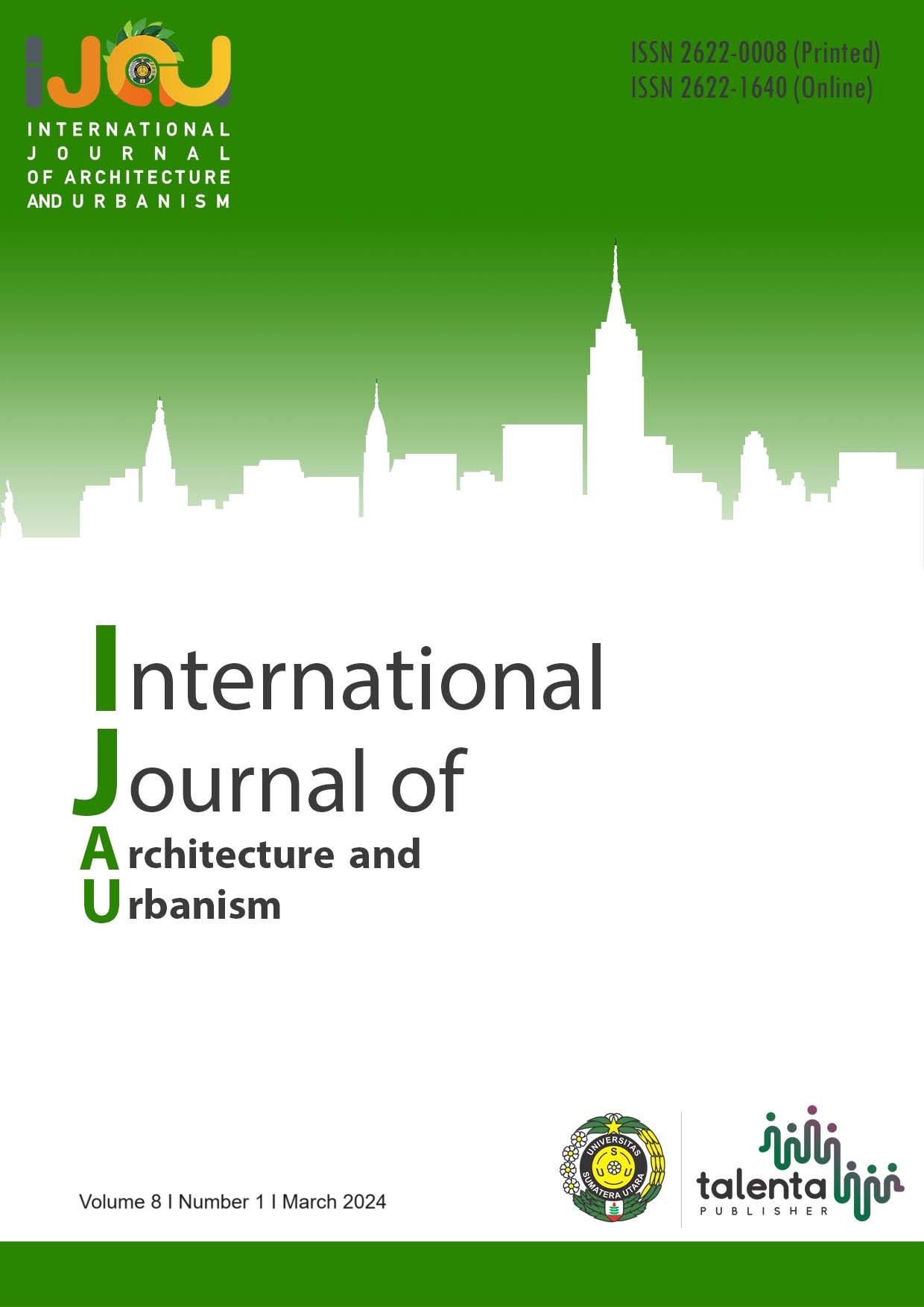Calculating Flanking Transmission for Improved Airborne Sound Insulation in Buildings
DOI:
https://doi.org/10.32734/ijau.v8i1.14441Abstract
The complexities of airborne noise insulation in tropical buildings provide challenges for predicting the value of airborne noise in buildings. The analysis employs standardized metrics, the Weighted Sound Reduction Index (DnT,w), to evaluate the impact of wall, floor, and ceiling combinations on acoustic performance. Notably, the study addresses the persistent challenge of flanking transmission, contributing to disparities between predicted and measured values. This study focuses on common construction materials in Indonesia. The outcomes reveal that lightweight construction materials, such as lightweight brick walls, consistently exhibit superior sound reduction, emphasizing their potential benefits in tropical regions. Additionally, the choice of ceiling materials, particularly gypsum board over wooden ceilings, significantly influences acoustic outcomes
Downloads
Downloads
Published
Versions
- 2024-03-31 (2)
- 2024-03-31 (1)
How to Cite
Issue
Section
License
Copyright (c) 2024 International Journal of Architecture and Urbanism

This work is licensed under a Creative Commons Attribution-ShareAlike 4.0 International License.


.png)










